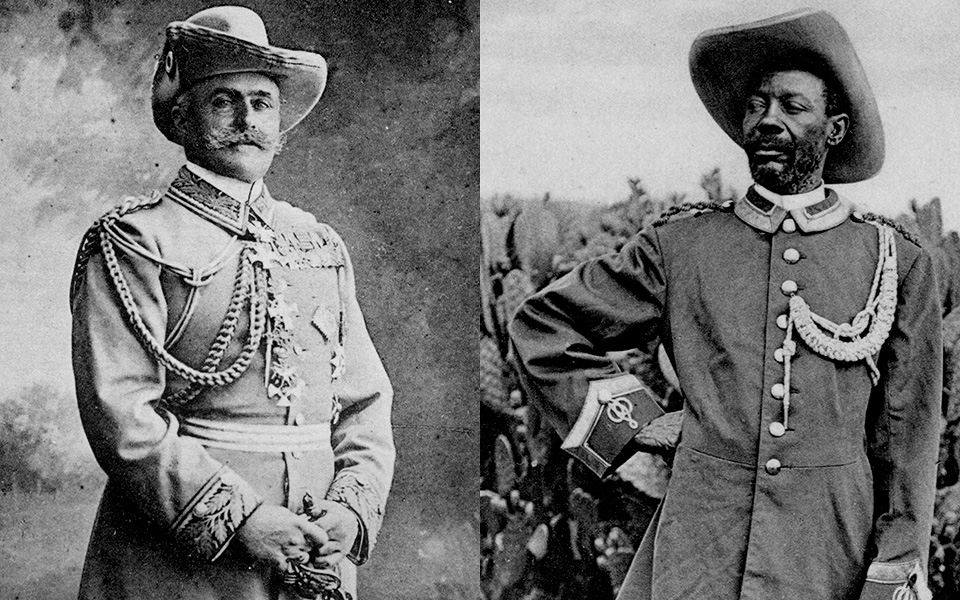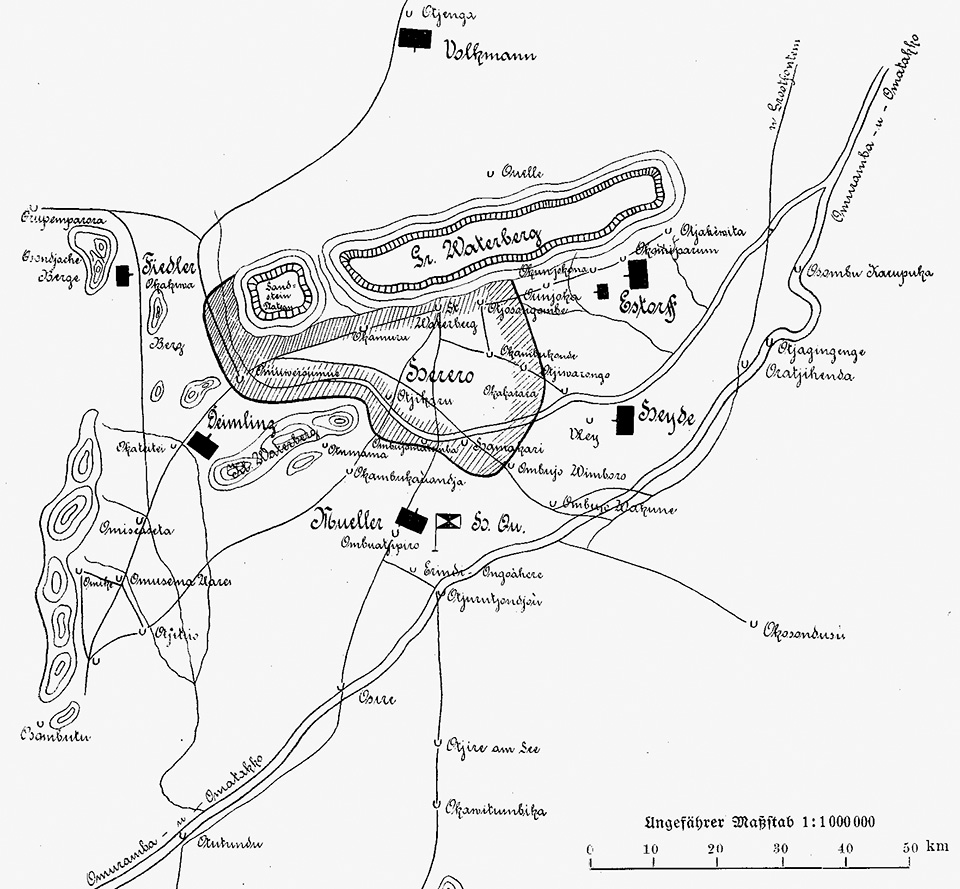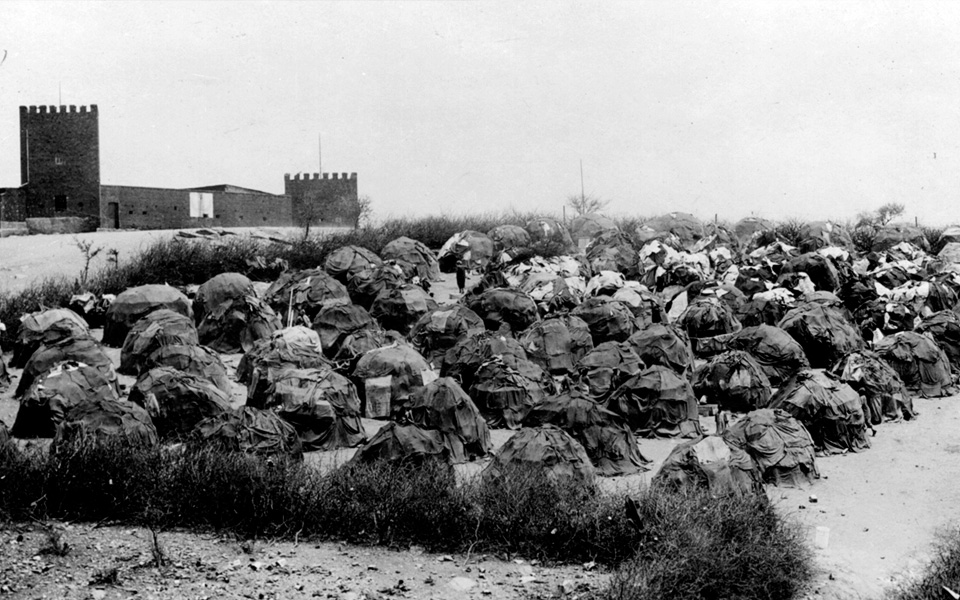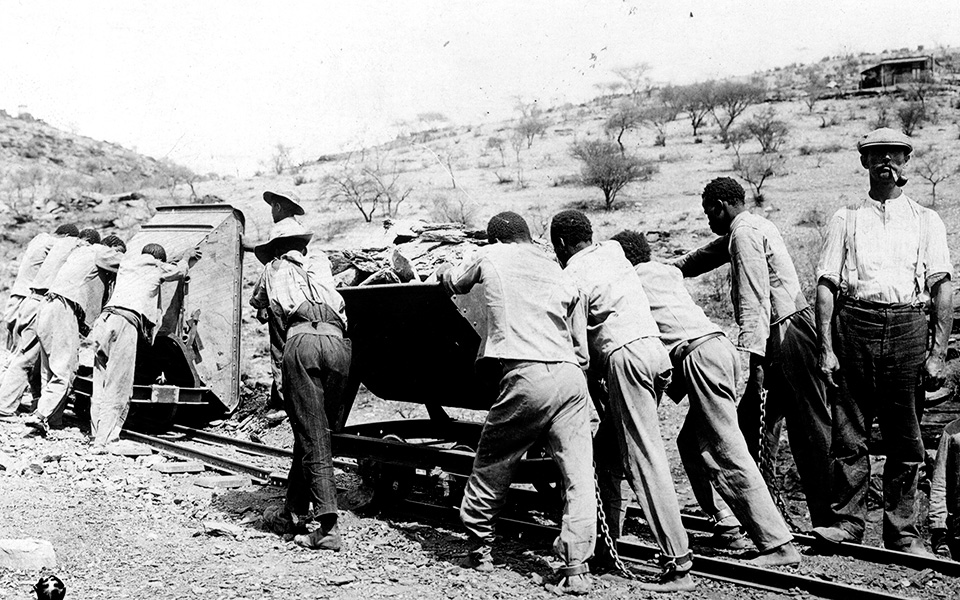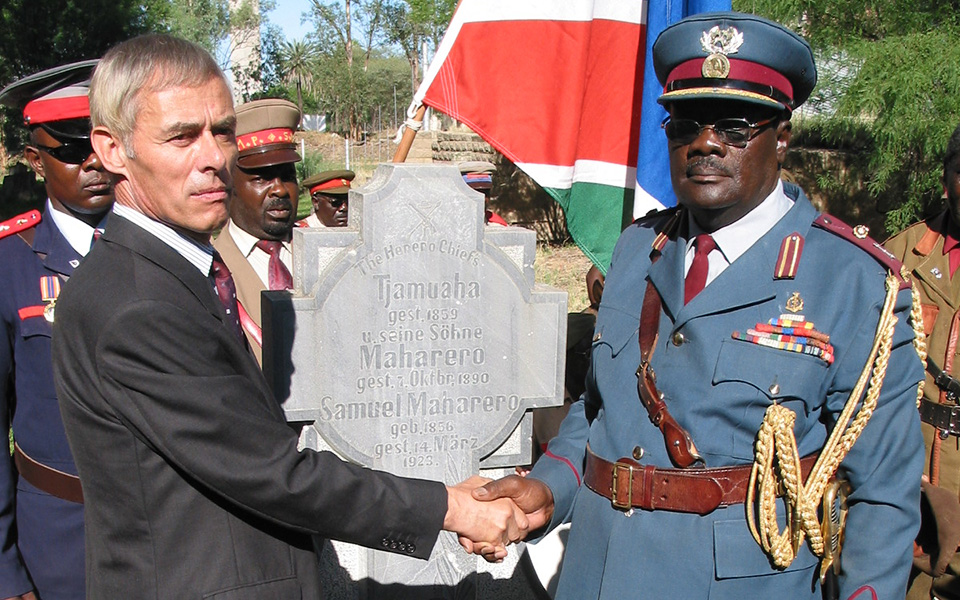A military defeat for General von Trotha. However, the trek of the Herero through the Kalahari proved even more catastrophic. Thousands perished, only 1,400 Herero reached Botswana, amongst them Maharero.
On the second of October Von Trotha released his infamous "Schießbefehl", an order to shoot every Herero; in the case of women and children shots were to be fired over their heads to make them run.
However, thousands of Herero survived in the bush. The Schutztruppe was unable to track them down. In 1906 the colonial administration asked missionaries, whom many of the Herero still trusted, to set up detention camps, where over 12,000 Herero were interned and disarmed. One of these camps was situated at a spring-water stream in what is today the Waterberg Wilderness private nature reserve.
From these camps the Herero were sent to concentration camps (following the example of the British in the Anglo-Boer War) and engaged in forced hard labour like railway construction. About 30 per cent of the Herero died in detention, close to 7,700 people in total.
